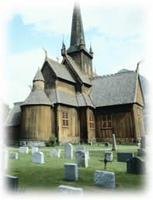
Let’s face it— you can’t do family history without delving into the lives (and deaths) of the dearly departed. So where better to dig for dirt than a cemetery? There’s a certain morbid fascination that comes from prowling through a graveyard, especially if there’s even the slightest possibility that you’ll trip over a familiar family tombstone. But before you begin your sleuthing, here’s some advice for proper cemetery research.
How to avoid a grisly death:
Cemeteries can be dangerous—so never go alone. You may fall into an empty grave (this has happened), get bitten by a snake (also happened), or get locked in after hours. One historian recalls tripping over some loose dirt and winding up with one foot in the grave, so to speak.
Bring essential supplies:
Unless your memory is eerily photographic, you might want to bring a camera, a notepad or a tape recorder (to record the information you can’t afford to forget). You can also bring crayons and paper for grave rubbings, although you’ll need to ask permission from the cemetery office. And to avoid incessant wandering, come equipped with a cemetery map (also available at the cemetery office).
Secrets in cemetery offices:
A cemetery office assistant can help you track down key bits of information like your ancestor’s death date, burial date and even next of kin (complete with accompanying historical records). Finding something as simple as a death certificate or a marriage date can lead you to other important biographical records. On a similar strain, you might also try the library or Internet. Cemetery surveys are often housed in libraries or posted online.
What a tombstone can tell:
There are your basic inscriptions like names, birth date, and death date. But what about enigmatic symbols like a compass or crescent moon? It could be that your great-grandfather was a Freemason or a Shriner. Other symbols like an anchor (indicating a mariner), or an open bible (a minister) will reveal the career or interests of your ancestors. Also, make sure you check the back of every tombstone. Family members sharing burial plots would often share tombstones.
Unusual grave markers:
Antiquated grave markers reveal much about the life and times of certain ancestors. Footstones, for example, were commonly added to gravesites from the nineteenth century (purportedly to keep coffin-less feet from making an appearance aboveground). Other variations on the traditional tombstone included box tombs, body stones (a throwback to medieval times), tomb tables (popular in the American Colonial era), and barrel vaults.
Skeletons in your closest:
Beware of digging too deep. You’re likely to uncover some morbid information. One particularly good story involves a historian who managed to locate an obituary based on records she obtained from a cemetery office. The obituary revealed that her great-aunt had been murdered by her great-uncle.
Who are YOUR ancestors? Click here to find out.